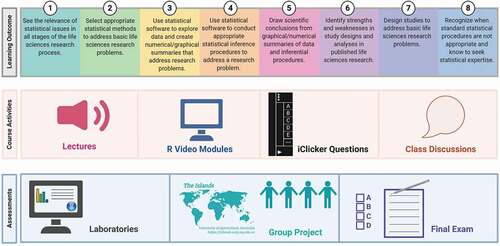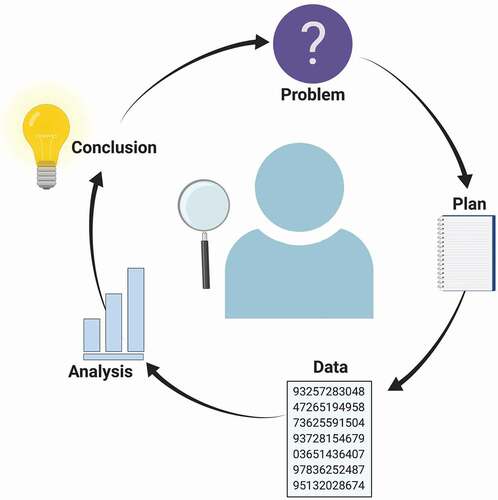Figures & data
Figure 1. Statistics requirement in life science programs of U15 Universities A. A systematic search demonstrated that 21.1% of programs do not require statistics courses (n = 70) and that 45.2% of programs only require one statistics course (n = 150). B. The majority (58.6%) of required or elective statistics courses are at the second-year (i.e. level 2) of undergraduate training (n = 194). Detailed methodology for panels A and B are described in the Supplemental Data.

Figure 2. Course model for Statistics and Scientific Inquiry in the Life Sciences. Course learning outcomes were designed to mirror the scientific inquiry process, and were mapped to course activities and assessments to enable dissemination, practice and application of statistical principles in a collaborative classroom environment.

Table 1. Common statistical errors in scientific inquiry. Examples of common statistical errors made at each stage of the scientific inquiry process from the literature.
Figure 3. The relevance of statistics at all stages of the scientific inquiry process. Scientific inquiry relies on identification of a scientific problem worth studying, after identification of gaps in the scientific literature. A plan is constructed, with clear identification of a study hypothesis, study design and methodologies. Data collection ensues and is later compiled and analysed using data summaries, and descriptive and inferential statistics. Conclusions can be made, enabling contribution of knowledge to the life sciences field of interest. These data and conclusions can then be used as foundations for establishment of new plans for study.

